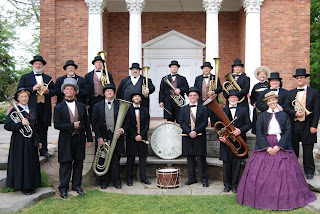Annunciations - Einojuhani Rautavaara
I decided to revisit Einojuhani Rautavaara's catalogue for yet another brass-oriented piece: Annunciations. He had so many intriguing pieces to listen to and all were new discoveries to me so I thought it valuable to dig a little deeper into his compositions. Annunciations was composed in 1977 and is a very challenging work for brass quintet, organ and wind ensemble. The two trumpet parts in the brass quintet are to be played on C trumpets. It was a commission by the Stockholm Organ Festival. Annunciations lasts roughly half an hour.
I found some well-written commentary at windrep.org (see below)
The introduction is slow and exploratory, like the creation of the world. In a way it lays out various symmetrical structures which invite further development. Fast passages in the organ trigger off a “domino” form in which various sections follow one another in succession, laid end to end as it were. A dense “forest of birds” is followed by a cantabile canon, which in turn culminates in a boisterous scherzo. After another cantabile passage the music quietens and a long, slow climb begins which eventually leads to the climax of the whole work. At this point the organ motor is switched off, leaving the notes of a dense chord swimming around in the hall and individually dying out over shorter or longer periods, depending on the acoustic, A swiftly moving finale then spurs on the work’s “annunciations” to a furious conclusion. One critic, commenting on this finale, once remarked that it reminded him of a Pasolini movie in which “drunken aristocrats writhe over the organ keys.”
I found some well-written commentary at windrep.org (see below)
The introduction is slow and exploratory, like the creation of the world. In a way it lays out various symmetrical structures which invite further development. Fast passages in the organ trigger off a “domino” form in which various sections follow one another in succession, laid end to end as it were. A dense “forest of birds” is followed by a cantabile canon, which in turn culminates in a boisterous scherzo. After another cantabile passage the music quietens and a long, slow climb begins which eventually leads to the climax of the whole work. At this point the organ motor is switched off, leaving the notes of a dense chord swimming around in the hall and individually dying out over shorter or longer periods, depending on the acoustic, A swiftly moving finale then spurs on the work’s “annunciations” to a furious conclusion. One critic, commenting on this finale, once remarked that it reminded him of a Pasolini movie in which “drunken aristocrats writhe over the organ keys.”





Comments
Post a Comment